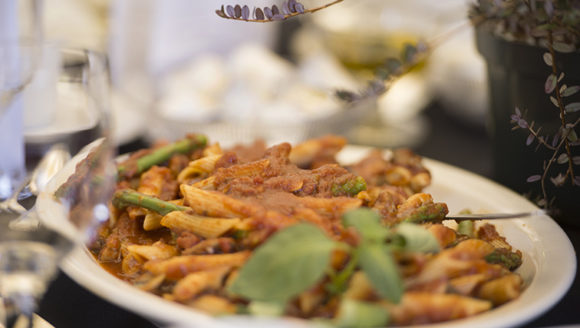 Think carefully before you send your relative or friend that meal-kit delivery subscription
Think carefully before you send your relative or friend that meal-kit delivery subscription
Tis the season for giving, cooking, and eating, but if you’re gifting or sending food this holiday season, both safety and packaging are two considerations you’ll want to keep in mind in order to avoid illness.
With the rising popularity and convenience of mail-order food, Donald Schaffner, an extension specialist in food science and distinguished professor in the Department of Food Science at Rutgers School of Environmental and Biological Sciences, provides some insight into how businesses are keeping foods fresh for delivery as well as some tips to ensure you are ordering from a trust-worthy company.
How do meal delivery services – such as Hello Fresh, Blue Apron or even Omaha Steaks – package/store ingredients to ensure their food does not become contaminated or spoiled?
Those meal delivery services may package foods in the same way that many retailers do, with meats sealed in tightly wrapped plastic packaging. When fresh meats are sent together with fresh produce items that will not be cooked before eating, this is especially important. In my opinion, the big challenge for all of these delivery services is proper temperature control. In a traditional supermarket, food is kept in a refrigerated case, but it is much more challenging to put cold food into a box and then try to send that box across the country and ensure the temperature does not increase too much. Companies achieve this by using insulated packaging as well as dry ice, frozen gel packs and conventional ice, but it’s also very important to ensure that boxes are fully packed and filled with packing material or insulation instead of empty space.
Are these types of meal delivery meals safe to eat? Especially in light of recent disease outbreaks of romaine lettuce, ground turkey and other foods.
As a good friend of mine used to say, “the risks of not eating still outweigh the risks of eating.” It is important to realize that nothing is ever completely safe or completely risky, but certainly many of the big-name brands in this business are all trying to do a very good job to ensure food safety.
What should consumers look out for when ordering these sorts of deliveries?
One thing is a commitment to food safety from the company. Does the company provide food safety advice on their website? Do they provide proper cooking directions in the package? Do they provide information on how to return the product if it arrives at a high temperature? If companies are not able to provide that information, consider taking your business elsewhere.
How is the rising popularity of meal delivery changing the way the food industry approaches food safety?
This is obviously an area where the food industry is intensely innovative. There is an awareness across the industry that we are entering a new phase of food safety when it comes to meal kits and mail-order delivery of food. This is further complicated by the addition of third-party delivery services (Instacart, Grub Hub, Uber Eats). I am part of a committee that is currently working under the structure of the Conference for Food Protection. We are drafting guidance documents that will be useful to companies working in these industries. The committee is composed of academic scientists, state and local regulators, as well as members of the food industry, including traditional and these newer food businesses.
This article originally appeared in Rutgers Today.

